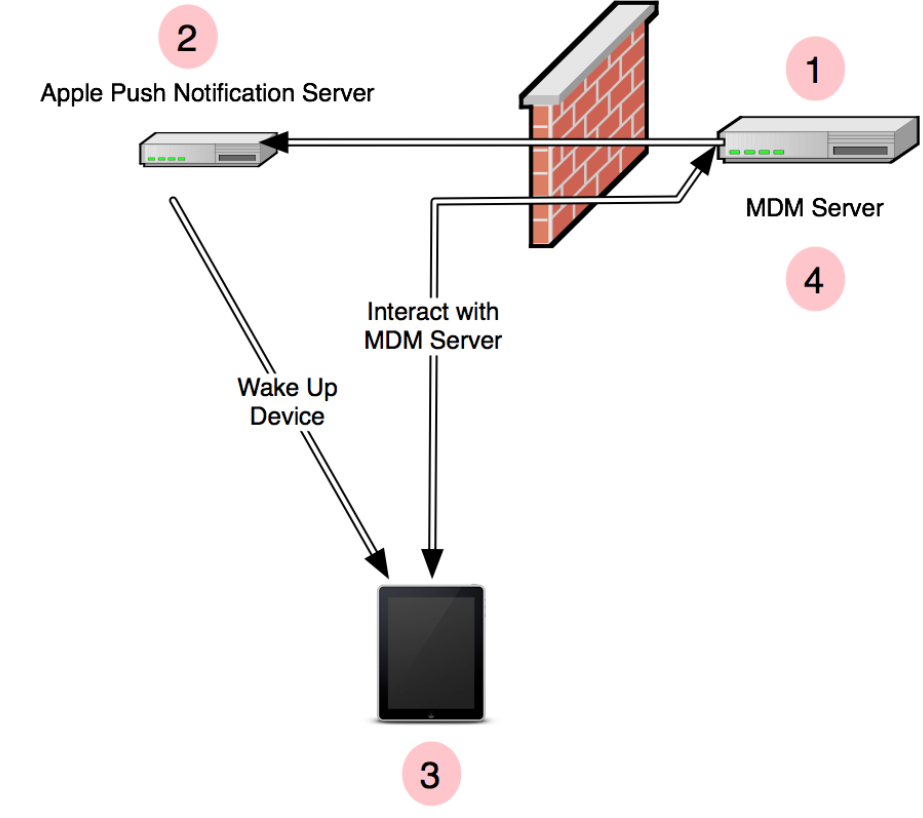
Because the Macs are still bound to AD, there is seamless communication between the two environments.
#Macos server mdm setup windows
AD handles the Windows side while Open Directory and OS X Server take care of the Macs. This requires IT to set up an Open Directory domain alongside the AD service, resulting in simpler management over the long haul.
#Macos server mdm setup mac
Admins can join Macs to AD domains and then use Apple Remote Desktop to push commands out to the Mac clients.Īnother option is implementing macOS X Server on its system and using Apple's Profile Manager to set Mac policies based on AD groups. Use AD alongside third-party toolsĪlthough AD and command support in OS X make integrating Macs into AD simpler, many administrators find it easier to bring other tools onboard to help with management. Admins can issue commands to set screensaver idle times, configure language and text formats, disable autocorrect and other key configurations. To address this, administrators can augment their existing tools' capabilities with the extensive set of commands available to macOS. This is especially a concern if the organization only has a small pool of Macs to support. One way to mitigate these issues is to extend the AD schema to further accommodate Mac computers, which may require development resources and technical expertise beyond what many organizations are willing to commit. That means compatibility issues will arise. Still, most desktop management products are built for Windows computers. The only exception would be if this desktop already exists within AD. When the desktop joins the domain, Windows Server automatically creates the computer object in AD, just like a Windows desktop.
#Macos server mdm setup mac os
Apple's Mac OS X makes this possible because Mac desktops and laptops include the client component necessary to join AD and other standards-based directory services, as long as the domain functional levels are 2008 or higher.īinding a Mac to the domain is relatively simple, assuming the user has the necessary access and domain credentials. Many IT administrators would prefer to seamlessly add Macs to their AD environments like they do with Windows desktops. Note: IT can also manage the Macs separately and treat them as mobile devices via MDM, but this method does not involve Active Directory.



If you want to continue using already created configurations, Miradore offers you the option to continue using “.mobileconfig” files exported from Apple Profile Manager.Luckily for these organizations, Active Directory (AD) can account for both of these OSes, and it includes single sign-on (SSO) capabilities, Distributed File Systems shares support, packet encryption and signing, and other policies. You can create configuration profiles or policies for entire groups directly in Miradore. Miradore allows you to replace Apple Profile Manager. test the migration on different device types.re-create the login profile and all configuration profiles.set up the new MDM solution and configure it for Apple services.collect all necessary certificates, usernames, and passwords.document the current MDM environment and its dependencies.Here are a few things you'll want to keep in mind when migrating to a new MDM solution: Make sure to select an MDM provider that supports the Apple device types used in your organization. Some MDM solutions offer comprehensive support for specific Apple device types, such as Mac computers or iPhones, while others offer cross-platform support. Here are some things to consider when migrating from Profile Manager to another MDM solution. However, Apple has not provided an alternative for Profile Manager, instead, they recommend switching to other Mobile Device Management solutions. Learn more about the current status of each macOS Server service and the available alternatives here. MacOS Server 5.12.2 is the latest version of the app, and alternatives to its services have already been established.

The server offered services like the File Server, the Caching Server and Profile Manager. Apple had been phasing out its macOS server for several years and finally shut it down for good. In April 2022, Apple decided to discontinue its macOS server.


 0 kommentar(er)
0 kommentar(er)
